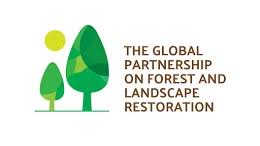Restoration in Niger and neighbouring countries has helped to “re-green” vast areas of rural West Africa with impressive results for agriculture and livelihoods – and at very low cost.*
Farmer Managed Natural Regeneration involves restoring degraded lands at large scale by harnessing the self-interest of smallholder farmers themselves. It involves the systematic regrowth and management of trees and shrubs from felled tree stumps, sprouting root systems or seeds.
The regrown trees and shrubs, integrated into both crops and grazing pastures, have been found to help restore soil structure and fertility, inhibit erosion and soil moisture evaporation, in some cases rehabilitate springs and the water table, and increase biodiversity.
This technique combats poverty and hunger amongst poor subsistence farmers by increasing food and timber production, creating linkages to livelihoods and promoting resilience to climate extremes.
Farmer Managed Natural Regeneration has largely been a farmer-driven movement. It is spread by word of mouth, demonstration, observation, deduction and spontaneous adoption. Today, it is one of a range of agroforestry approaches promoted by World Vision and partner organizations in at least 23 countries around the world.
It is an extremely low-cost practice. Farmers must provide some labor during initial pruning, but the ongoing costs have been found to be low – an International Fund for Agriculture project in Niger estimates that the value of farmer labour inputs run at around $14/hectare/year. Costs for projects supporting the spread of Farmer Managed Natural Regeneration are also comparatively low. World Vision projects in West Africa have spent $1.27 per living tree during the project period. Subsequent adoption and spread dilutes this cost further.
In Niger, Farmer Managed Natural Regeneration has helped restore tree cover to some 6 million hectares of land since the 1980s. Average tree density has risen from 4 to 40 trees per hectare. Some studies estimate that household incomes have grown by up to $1,000 per year. Some 4.5 million people have benefitted. The practice is also associated with an increase in cereal production of 500,000 tons per year.
A more recent project in Ethiopia is also bringing benefits to the land and its people. Involving the World Bank, the Ethiopian government, the Humbo community and World Vision, this carbon sequestration project has regenerated about 2,700 hectares of previously degraded forest land, enhancing the local communities’ livelihoods through improved environmental conditions. Some $425,000 has been paid out as carbon credits to local cooperatives which have used it to, for example, construct grain stores, irrigation schemes and flour mills, improving the resilience of livelihoods for over 5,000 households.
Key challenges to the adoption of Farmer Managed Natural Regeneration are the beliefs and attitudes of those whose livelihoods depend on the land. When communities are convinced that it is in their best interest to manage land resources sustainably, and fears and misconceptions are addressed, adoption is straightforward.
Other common challenges such as theft of trees and damage by livestock and fire can be dealt with through community agreements, awareness campaigns, capacity building and peer to peer mentoring, formation of community organizations, creation of by-laws and enforcement mechanisms, and regular follow up visits and empowerment by traditional, religious and government authorities.
Unfavorable tree ownership laws are also a common challenge, especially when responsibility for tree management and the right to benefit are not held by the land manager. Targeted advocacy is required to show that when farmers are given the rights to manage trees on their own land, tree density will rise at no cost to the government.

